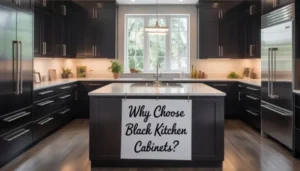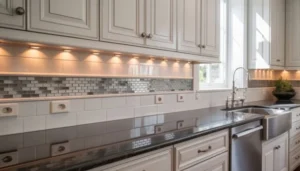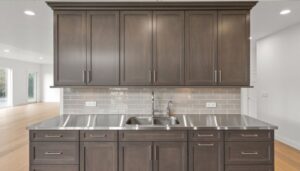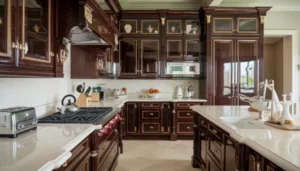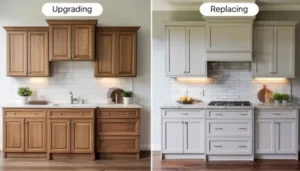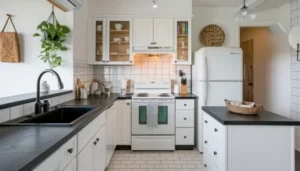Transform Your Space with Trendsetting Designs
As we step into 2024, the world of luxury home remodeling continues to evolve with innovative ideas, sustainable solutions, and cutting-edge technology. Whether you’re aiming for a complete overhaul or seeking subtle enhancements, there’s a plethora of remodeling trends to explore this year. From eco-conscious designs to futuristic smart home integrations, homeowners are embracing creativity and functionality like never before. Here are the top 10 luxury home remodeling ideas of 2024 to inspire your next project:
Sustainable Renovations
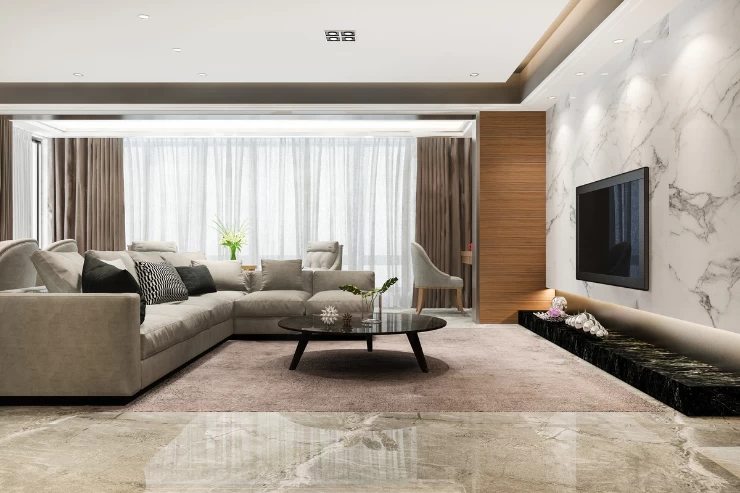
Sustainable renovations involve making changes to buildings or spaces in a way that minimizes environmental impact, maximizes energy efficiency, and promotes long-term sustainability. Here are some key principles and strategies for sustainable renovations:
01-Energy Efficiency: Upgrade insulation, windows, and doors to reduce energy loss. Install energy-efficient heating, ventilation, and air conditioning (HVAC) systems and appliances. Consider using renewable energy sources such as solar panels or geothermal heating.
02-Water Conservation: Install low-flow fixtures, such as toilets, faucets, and showerheads, to reduce water consumption. Consider harvesting rainwater for irrigation or toilet flushing.
03-Material Selection: Choose eco-friendly and sustainable building materials such as reclaimed wood, bamboo, recycled metal, and low-VOC (volatile organic compound) paints and finishes. Consider the life cycle of materials, including their production, transportation, use, and disposal.
04-Indoor Air Quality: Improve indoor air quality by using natural ventilation, air filtration systems, and non-toxic building materials. Minimize the use of synthetic materials and chemicals that release harmful emissions.
- Waste Reduction: Minimize construction waste by salvaging materials, recycling, and properly disposing of waste. Consider deconstruction instead of demolition to preserve reusable materials.
Open-Concept Living
Open-concept living refers to a design concept in architecture and interior design where different functional spaces within a home, such as the living room, dining area, and kitchen, are combined into one large, open space without traditional dividing walls or barriers. This design trend has become increasingly popular for several reasons:
01-Enhanced Social Interaction: Open-concept living encourages social interaction and connectivity among family members and guests by eliminating barriers between different areas of the home. It allows for easier communication and interaction while cooking, dining, or relaxing.
02-Improved Natural Light and Views: Removing interior walls allows natural light to penetrate deeper into the living space, creating a brighter and more inviting environment. It also provides unobstructed views of the surrounding areas, which can enhance the overall aesthetics of the space.
03-Flexibility and Adaptability: Open-concept layouts offer greater flexibility in furniture arrangement and usage of space. Homeowners have the freedom to customize the layout according to their lifestyle and changing needs, whether it’s hosting large gatherings or creating intimate settings for relaxation.
04-Perception of Spaciousness: By eliminating visual barriers, open-concept living can make smaller homes feel larger and more spacious. It creates a sense of continuity and flow throughout the space, making it appear more expansive and airy.
05-Integration of Activities: Combining different functional areas into one cohesive space allows for seamless integration of activities. For example, individuals can engage in conversation while preparing meals in the kitchen or keep an eye on children playing in the living area while attending to other tasks.
06-Contemporary Aesthetics: Open-concept living is often associated with modern and contemporary design styles that emphasize clean lines, minimalism, and simplicity. It can create a sleek and sophisticated look that appeals to many homeowners.
Smart Home Technology
in Luxury Home Remodeling
Smart home technology refers to the integration of various devices and systems within a home that are connected to the internet and can be controlled remotely or automated. These devices are designed to enhance convenience, security, energy efficiency, and comfort for homeowners. Some common examples of smart home technology include:
01-Smart Thermostats: These devices allow homeowners to control the heating and cooling of their homes remotely through smartphone apps. Smart thermostats can learn household schedules and preferences to optimize energy usage and save on utility bills.
02-Smart Lighting: Smart lighting systems enable users to control the brightness, color, and scheduling of lights throughout their homes using smartphones or voice commands. They can also be programmed to turn on or off based on occupancy or specific triggers.
03-Smart Locks: Smart locks provide homeowners with keyless entry options through smartphones, keypads, or biometric sensors. They allow users to remotely lock or unlock doors, monitor access, and receive notifications of entry attempts.
04-Security Cameras and Systems: Smart security cameras and systems allow homeowners to monitor their properties in real-time and receive alerts about suspicious activities or intrusions. These systems often include motion sensors, video recording capabilities, and integration with smartphone apps for remote access and control.
05-Smart Smoke Detectors and Carbon Monoxide Detectors: These devices provide early detection of smoke, fire, and carbon monoxide leaks and send alerts to homeowners’ smartphones or other connected devices. They can also integrate with other smart home systems for enhanced safety and automation.
Smart home technology offers homeowners greater convenience, security, and energy efficiency by allowing them to monitor, control, and automate various aspects of their homes from anywhere using internet-connected devices. However, it’s essential for users to consider factors such as compatibility, privacy, security, and usability when selecting and integrating smart home devices into their living spaces.
Minimalist Design
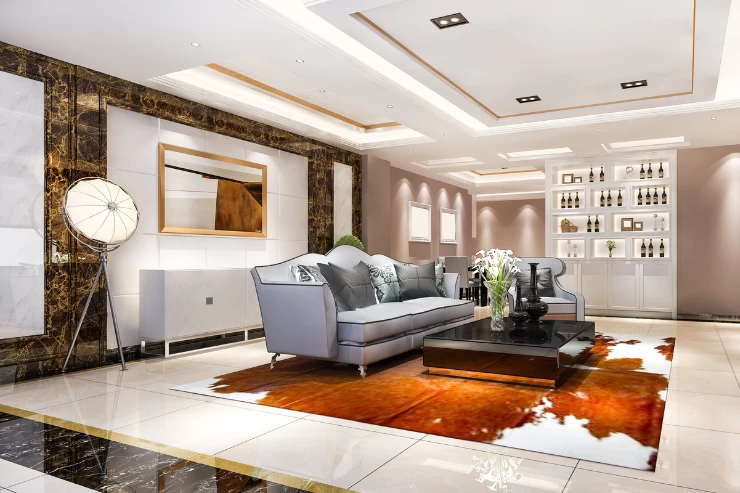
Minimalist design is a style characterized by simplicity, clean lines, and a focus on functionality. It emphasizes the principle of “less is more,” where every element in a space is carefully chosen and serves a specific purpose. Here are some key principles and characteristics of minimalist design:
01-Simplicity: Minimalist design focuses on simplicity and clarity. It eliminates unnecessary elements, decorations, and embellishments to create a clean and uncluttered aesthetic.
02-Clean Lines: Minimalist interiors often feature clean, straight lines and geometric shapes. Furniture, architectural elements, and decor items are typically sleek and streamlined, without ornate details or intricate patterns.
03-Neutral Color Palette: Minimalist spaces tend to use a neutral color palette, such as white, beige, gray, and black, to create a sense of calm and sophistication. These colors help to visually expand the space and provide a timeless backdrop for minimalist design elements.
04-Functional Furniture: Furniture in minimalist design is selected for its functionality and practicality. Pieces are often multifunctional and have simple, understated designs. Storage solutions are integrated seamlessly to minimize visual clutter.
05-Open Space: Minimalist design emphasizes open space and natural light. Rooms are often spacious and uncluttered, with furniture arranged to optimize flow and circulation. Large windows and unobstructed views of the outdoors are common features in minimalist interiors.
Minimalist design offers a serene and tranquil environment that promotes clarity, focus, and a sense of well-being. It is a timeless aesthetic that transcends trends and celebrates the beauty of simplicity in both form and function.
Outdoor Retreats
in Luxury Home Remodeling
Outdoor retreats are designed outdoor spaces that provide a peaceful and rejuvenating environment for relaxation, recreation, and connection with nature. These spaces are often designed to complement and enhance the natural surroundings, offering a tranquil escape from the hustle and bustle of daily life. Here are some elements commonly found in outdoor retreats:
01-Natural Landscaping: Outdoor retreats often feature natural landscaping elements such as trees, shrubs, flowers, and native plants. These elements help create a sense of tranquility and harmony with the surrounding environment.
02-Water Features: Water features such as ponds, streams, fountains, or waterfalls can add a calming and soothing ambiance to outdoor retreats. The sound of flowing water can help mask noise pollution and create a peaceful atmosphere.
03-Seating Areas: Comfortable seating areas, such as benches, hammocks, lounge chairs, or built-in seating, invite visitors to relax and unwind in the outdoor space. These seating areas are strategically placed to take advantage of scenic views and natural light.
04-Shade Structures: Shade structures such as pergolas, arbors, gazebos, or umbrellas provide relief from the sun and create comfortable outdoor living spaces. They can also serve as architectural focal points and add visual interest to the landscape.
05-Fire Features: Fire pits, fireplaces, or outdoor heaters can extend the usability of outdoor retreats into the cooler evenings or colder months. They create a cozy ambiance and provide warmth for gatherings and relaxation outdoors.
06-Outdoor Cooking and Dining Areas: Outdoor retreats often include cooking and dining areas equipped with grills, outdoor kitchens, dining tables, and seating. These areas encourage outdoor entertaining and dining while enjoying the natural surroundings.
Outdoor retreats offer a sanctuary where individuals can escape, unwind, and reconnect with nature. Whether it’s a small backyard oasis, a rooftop garden, or a sprawling landscape, outdoor retreats provide opportunities for relaxation, contemplation, and enjoyment of the outdoors.
Statement Ceilings
Statement ceilings are architectural or design elements that draw attention to the overhead space in a room, creating visual interest and adding character to the interior environment. They serve as focal points and can significantly impact the overall ambiance and aesthetic appeal of a space. Here are several ways to create statement ceilings:
01-Architectural Details: Incorporate architectural details such as coffered ceilings, tray ceilings, vaulted ceilings, or beams to add depth and dimension to the overhead space. These features can create visual interest and architectural drama, enhancing the character of the room.
02-Texture and Patterns: Use texture and patterns to add visual intrigue to the ceiling surface. Consider techniques such as textured plaster, wood paneling, decorative molding, or embossed wallpaper to create depth and dimension. Geometric patterns, stripes, or stenciled designs can also add a touch of whimsy and personality to the space.
03-Color: Experiment with bold colors or contrasting hues to make a statement with the ceiling. Consider painting the ceiling a different color than the walls to create visual contrast and draw the eye upward. Bold or vibrant colors can add drama and personality to the space, while soft or muted tones can create a serene and calming atmosphere.
04-Wallpaper and Murals: Install wallpaper or murals on the ceiling to add artistic flair and visual interest. Choose patterns, motifs, or images that complement the overall theme and style of the room. Wallpaper and murals can transform the ceiling into a work of art and serve as a conversation piece.
05-Lighting Fixtures: Use lighting fixtures as decorative elements to accentuate the ceiling and create ambiance. Consider chandeliers, pendant lights, recessed lighting, or cove lighting to illuminate the overhead space and enhance its architectural features. Lighting fixtures can add drama, warmth, and sophistication to the room.
Luxurious Bathrooms
Luxurious bathrooms are designed to provide a spa-like retreat within the home, offering comfort, relaxation, and indulgence. They often feature high-end materials, sophisticated finishes, and luxurious amenities that elevate the bathing experience. Here are some elements commonly found in luxurious bathrooms:
01-Spacious Layout: Luxurious bathrooms often have ample space, allowing for a sense of openness and comfort. They may include separate zones for different functions such as bathing, grooming, and relaxation.
02-High-End Materials: Luxurious bathrooms feature high-quality materials such as marble, granite, quartz, and natural stone for countertops, flooring, and wall surfaces. These materials add elegance, sophistication, and durability to the space.
03-Luxurious Bathtubs: Freestanding soaking tubs, whirlpool tubs, or spa-like jetted tubs are common features in luxurious bathrooms. These tubs provide a luxurious bathing experience and serve as focal points within the space.
04-Walk-In Showers: Spacious walk-in showers with multiple showerheads, rain shower fixtures, and built-in benches are popular features in luxurious bathrooms. They offer a refreshing and invigorating shower experience with plenty of room to move and relax.
05-Custom Cabinetry and Storage: Custom-built cabinetry and storage solutions maximize functionality and organization in luxurious bathrooms. They provide ample space for storing toiletries, towels, and other essentials while maintaining a clean and clutter-free environment.
Multi-Functional Spaces
in luxury Home Remodeling
Multi-functional spaces are versatile areas within a home or building that serve more than one purpose, allowing for efficient use of space and accommodating various activities and needs. These spaces are designed to be adaptable and flexible, providing functionality and convenience for different occupants and activities. Here are some examples of multi-functional spaces:
01-Home Offices: Home offices can double as guest rooms or study areas by incorporating a sleeper sofa or a Murphy bed. Fold-down desks or wall-mounted desks are also popular options for optimizing space in smaller rooms.
02-Living Rooms: Living rooms can be designed to serve as entertainment spaces, relaxation areas, and dining spaces. Modular furniture such as sectional sofas with built-in storage or coffee tables that convert into dining tables offer versatility and functionality in living rooms.
03-Kitchen Islands: Kitchen islands can serve multiple functions, including food preparation, dining, and storage. Incorporating built-in appliances, sinks, and seating areas into kitchen islands maximizes efficiency and creates a central hub for cooking and socializing.
04-Guest Rooms: Guest rooms can be designed with multi-functional furniture such as sofa beds, daybeds, or trundle beds to accommodate guests while doubling as a home office, playroom, or media room when not in use.
05-Open-Plan Layouts: Open-plan layouts combine multiple living areas, such as living rooms, dining rooms, and kitchens, into one cohesive space. This design approach promotes social interaction and flexibility, allowing for seamless transitions between different activities and functions.
06-Loft Spaces: Loft spaces can be utilized as multi-functional areas for sleeping, working, and recreation. Loft beds with built-in desks or seating areas maximize vertical space and create separate zones within a single room.
07-Outdoor Living Spaces: Outdoor living spaces such as patios, decks, and rooftops can be designed to accommodate multiple activities, including dining, lounging, gardening, and outdoor cooking. Flexible seating arrangements, portable furniture, and retractable awnings enhance functionality and comfort in outdoor areas.
08-Flex Rooms: Flex rooms are versatile spaces that can be customized to suit changing needs and preferences. These rooms can be used as home gyms, playrooms, hobby rooms, or additional bedrooms depending on the requirements of the occupants.
09-Storage Solutions: Incorporating built-in storage solutions such as shelving units, cabinets, and closets maximizes space and reduces clutter in multi-functional areas. Customized storage systems can be tailored to accommodate specific items and activities, optimizing organization and accessibility.
10-Smart Technology: Integrating smart technology features such as motorized furniture, adjustable lighting, and programmable thermostats enhances the functionality and convenience of multi-functional spaces. Smart home automation systems allow users to control various aspects of their environment with ease and efficiency.
Multi-functional spaces offer versatility, efficiency, and adaptability, making them ideal for modern lifestyles where flexibility and convenience are paramount. By incorporating thoughtful design elements, innovative furniture solutions, and advanced technology, multi-functional spaces can maximize the potential of any home or building.
Natural Elements
Natural elements refer to materials, textures, and features that are derived from or inspired by the natural world. Incorporating natural elements into interior and exterior design schemes can create a sense of harmony, tranquility, and connection with the environment. Here are some examples of natural elements commonly used in design:
01-Wood: Wood is one of the most versatile and widely used natural materials in design. It adds warmth, texture, and natural beauty to interiors and exteriors. Common applications of wood include flooring, furniture, cabinetry, wall paneling, and architectural details such as beams and trusses.
02-Stone: Stone materials such as granite, marble, limestone, slate, and travertine are prized for their durability, elegance, and timeless appeal. Stone can be used for flooring, countertops, fireplace surrounds, accent walls, and outdoor hardscaping elements such as patios, walkways, and retaining walls.
03-Water: Water features such as fountains, ponds, streams, and waterfalls can add a sense of tranquility and serenity to outdoor spaces. The sound of flowing water can help mask noise pollution and create a soothing ambiance.
04-Plants and Greenery: Incorporating plants, flowers, and greenery into interior and exterior spaces can improve air quality, reduce stress, and create a connection with nature. Indoor plants can be displayed in pots, planters, hanging baskets, or vertical gardens, while outdoor gardens can include a variety of landscaping elements such as trees, shrubs, flowers, and grasses.
05-Natural Light: Maximizing natural light through windows, skylights, and glass doors can enhance the ambiance and functionality of interior spaces. Natural light creates a sense of openness, warmth, and vitality, while reducing the need for artificial lighting during daylight hours.
06-Overall, incorporating natural elements into design schemes enhances the aesthetic appeal, functionality, and emotional resonance of interior and exterior spaces, creating environments that are conducive to well-being, creativity, and comfort.
Personalized Touches
in Luxury Home Remodeling
Personalized touches in interior design refer to unique elements and details that reflect the individual tastes, preferences, and personality of the occupants. These touches add character, warmth, and a sense of identity to living spaces, making them feel truly personalized and inviting. Here are some ideas for incorporating personalized touches into interior design:
01-Family Photographs and Artwork: Displaying family photographs, artwork, and personal collections on walls, shelves, or tabletops adds a personal touch to the home. These items not only showcase cherished memories but also reflect the interests and experiences of the occupants.
02-Handcrafted Items: Incorporate handcrafted items such as pottery, ceramics, textiles, or woodworking pieces into the decor. Handcrafted items add a sense of craftsmanship, authenticity, and uniqueness to the space, making it feel more personal and inviting.
03-Customized Furniture and Upholstery: Invest in customized furniture pieces or upholstery fabrics that reflect the individual style and preferences of the occupants. Choose colors, patterns, and textures that resonate with your personality and complement the overall design scheme of the room.
04-Personal Collections and Memorabilia: Display personal collections, souvenirs, and memorabilia collected from travels, hobbies, or special occasions. Whether it’s vintage books, antique maps, or seashells gathered from beach trips, these items add visual interest and tell a story about the occupants’ lives and experiences.
05-DIY Projects: Get creative with do-it-yourself (DIY) projects that add a personal touch to the home. Whether it’s refurbishing furniture, crafting homemade artwork, or repurposing household items, DIY projects allow for self-expression and customization in interior design.
06-Favorite Colors and Textures: Incorporate favorite colors, textures, and materials into the decor to create a personalized and cohesive look. Whether it’s a bold accent wall, plush throw pillows, or soft area rugs, choosing elements that resonate with your personal style adds comfort and warmth to the space.
07-Customized Lighting Fixtures: Install customized lighting fixtures such as pendant lights, chandeliers, or table lamps that reflect your taste and personality. Lighting fixtures can serve as focal points and enhance the ambiance of the room while adding a personalized touch to the decor.
08-Signature Scent and Aromatherapy: Introduce signature scents and aromatherapy into the home to create a welcoming and relaxing atmosphere. Use scented candles, essential oils, or reed diffusers in favorite fragrances to evoke positive emotions and memories.
09-Personalized Accessories and Decorative Objects: Incorporate personalized accessories and decorative objects that reflect your interests, hobbies, and passions. Whether it’s sports memorabilia, musical instruments, or vintage collectibles, these items add personality and character to the space.
10-Custom Artwork and Murals: Commission custom artwork, murals, or wall decals that reflect your personal taste and style. Whether it’s a painting, sculpture, or mural inspired by nature, landscapes, or abstract designs, custom artwork adds a unique and personal touch to the home.
Conclusion
top 10 luxury home remodeling ideas of 2024 offer a blend of functionality, aesthetics, and sustainability, catering to the evolving needs and preferences of modern homeowners. Whether you’re embarking on a large-scale renovation or making subtle updates, incorporating these trendsetting designs can transform your living space into a sanctuary of comfort, style, and innovation.
Our Services
Recent Posts
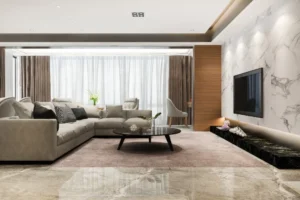
Top 10 Luxury Home Remodeling Ideas of 2024 Transform Your…


